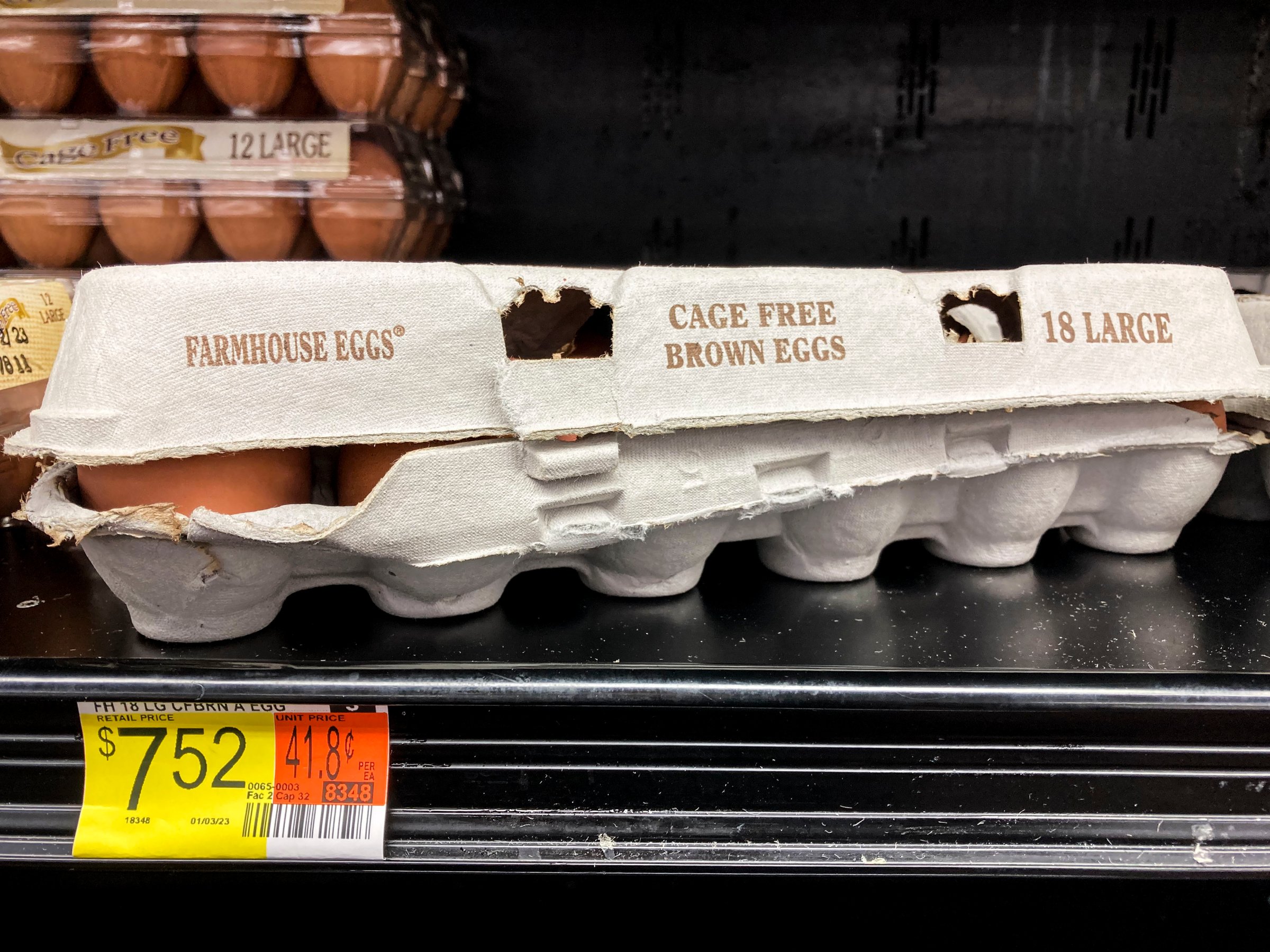
The price of eggs has skyrocketed in recent months, up 138% year-over-year last month. A dozen eggs now averages about $4.25, due in part to avian flu, which is tearing through poultry farms across the U.S.—wiping out some 58 million birds in the last year.
But there’s another culprit, says a farm advocacy group: price gouging. America’s largest egg producer saw a 600% jump in profits in the last quarter alone.
Farm Action, a nonprofit that campaigns against corporate influence in the farm industry, alleged in a letter to Federal Trade Commission (FTC) Chair Lina Khan on Thursday that Mississippi-based Cal-Maine Foods is engaging in “apparent price gouging, price coordination, and other unfair or deceptive acts or practices” as Americans pay more than ever for the staple ingredient.
Farm Action claims the “real culprit” behind the massive price increases is “a collusive scheme among industry leaders to turn inflationary conditions and an avian flu outbreak into an opportunity to extract egregious profits.”
Cal-Maine Foods, which controls 20% of the retail egg market, reported quarterly sales up 110% and gross profits up more than 600% over the same quarter in the prior fiscal year, according to a December filing with the Securities and Exchange Commission (SEC). The company pointed to decreased egg supply nationwide due to avian flu as the reason for higher prices and record sales. Cal-Maine brands include Egg-Land’s Best, Farmhouse Eggs, and Land O’ Lakes eggs.
The company has had no positive avian flu tests on any of its farms, according to its quarterly report. Cal-Maine did not respond to a request for comment.
“Avian flu is not manufactured—it’s real,” says Joe Maxwell, the co-founder of Farm Action. “But the dominant firms are using that supply chain disruption to gouge the consumers. The numbers in our letter clearly indicate that the production loss due to avian flu was minor compared to the prices being charged.”
At the heart of America’s rising egg prices is a tightening supply of eggs due to avian flu. Commercial poultry farms impacted by the disease have to euthanize all birds and rebuild their flocks, meaning they can be out of commission for months.
More from TIME
“This is the largest animal emergency that USDA has ever faced in this country,” says Gino Lorenzoni, an assistant professor of poultry science and avian health at Penn State University. “And it doesn’t look like it’s going to stop anytime soon.”
Regulators and industry groups have long argued over whether corporations should have the power to set prices and drive up the cost of groceries, especially during times of crisis.
There is no federal law outlawing price gouging, though the FTC does have the power to prevent “unfair or deceptive acts of practices” as the nation’s top consumer protection enforcer. The agency has been historically reticent to employ the full extent of its authority under that provision, but Farm Action believes there’s a good chance regulators will investigate.
“The FTC has broader authority as it relates to deceptive practices,” Maxwell says. “The Chair spoke directly to these types of issues publicly saying it was something that the FTC intends on taking greater active enforcement on so we felt that opened the door to present this case to the Chair and the FTC.”
Khan has previously argued that enforcers should seek to challenge monopoly power in markets “with highly inelastic demand” that “imposes substantial costs on the public,” according to Farm Action.
Overall, U.S. egg inventory was down 29% in December compared to the beginning of the year, largely because the dominant egg producers chose not to increase production despite “favorable conditions,” says Basel Musharbash, a lawyer for Farm Action.
“Could there be a perfectly innocuous explanation for all of this?” Musharbash says. “Sure. But it does suggest that there is something worth investigating here and looking into how the industry seemed to calibrate its production decisions across competitors in order to induce and maintain these extremely high prices over the entire year.”
More Must-Reads from TIME
- Cybersecurity Experts Are Sounding the Alarm on DOGE
- Meet the 2025 Women of the Year
- The Harsh Truth About Disability Inclusion
- Why Do More Young Adults Have Cancer?
- Colman Domingo Leads With Radical Love
- How to Get Better at Doing Things Alone
- Michelle Zauner Stares Down the Darkness
Write to Nik Popli at nik.popli@time.com